Cortical bone adaptation to a moderate level of mechanical loading in male Sost deficient mice
- PMID: 33339872
- PMCID: PMC7749116
- DOI: 10.1038/s41598-020-79098-0
Cortical bone adaptation to a moderate level of mechanical loading in male Sost deficient mice
Abstract
Loss-of-function mutations in the Sost gene lead to high bone mass phenotypes. Pharmacological inhibition of Sost/sclerostin provides a new drug strategy for treating osteoporosis. Questions remain as to how physical activity may affect bone mass under sclerostin inhibition and if that effect differs between males and females. We previously observed in female Sost knockout (KO) mice an enhanced cortical bone formation response to a moderate level of applied loading (900 με at the tibial midshaft). The purpose of the present study was to examine cortical bone adaptation to the same strain level applied to male Sost KO mice. Strain-matched in vivo compressive loading was applied to the tibiae of 10-, 26- and 52-week-old male Sost KO and littermate control (LC) mice. The effect of tibial loading on bone (re)modeling was measured by microCT, 3D time-lapse in vivo morphometry, 2D histomorphometry and gene expression analyses. As expected, Sost deficiency led to high cortical bone mass in 10- and 26-week-old male mice as a result of increased bone formation. However, the enhanced bone formation associated with Sost deficiency did not appear to diminish with skeletal maturation. An increase in bone resorption was observed with skeletal maturation in male LC and Sost KO mice. Two weeks of in vivo loading (900 με at the tibial midshaft) induced only a mild anabolic response in 10- and 26-week-old male mice, independent of Sost deficiency. A decrease in the Wnt inhibitor Dkk1 expression was observed 3 h after loading in 52-week-old Sost KO and LC mice, and an increase in Lef1 expression was observed 8 h after loading in 10-week-old Sost KO mice. The current results suggest that long-term inhibition of sclerostin in male mice does not influence the adaptive response of cortical bone to moderate levels of loading. In contrast with our previous strain-matched study in females showing enhanced bone responses with Sost ablation, these results in males indicate that the influence of Sost deficiency on the cortical bone formation response to a moderate level of loading differs between males and females. Clinical studies examining antibodies to inhibit sclerostin may need to consider that the efficacy of additional physical activity regimens may be sex dependent.
Conflict of interest statement
The authors declare no competing interests.
Figures


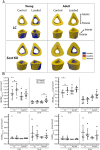
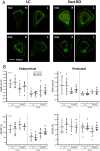
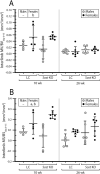
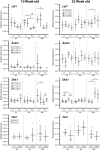
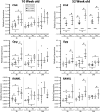
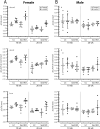
Similar articles
-
Sost deficiency led to a greater cortical bone formation response to mechanical loading and altered gene expression.Sci Rep. 2017 Aug 25;7(1):9435. doi: 10.1038/s41598-017-09653-9. Sci Rep. 2017. PMID: 28842678 Free PMC article.
-
Sost deficiency leads to reduced mechanical strains at the tibia midshaft in strain-matched in vivo loading experiments in mice.J R Soc Interface. 2018 Apr;15(141):20180012. doi: 10.1098/rsif.2018.0012. J R Soc Interface. 2018. PMID: 29669893 Free PMC article.
-
Effects of Long-Term Sclerostin Deficiency on Trabecular Bone Mass and Adaption to Limb Loading Differ in Male and Female Mice.Calcif Tissue Int. 2020 Apr;106(4):415-430. doi: 10.1007/s00223-019-00648-4. Epub 2019 Dec 23. Calcif Tissue Int. 2020. PMID: 31873756
-
Genetics of Sost/SOST in sclerosteosis and van Buchem disease animal models.Metabolism. 2018 Mar;80:38-47. doi: 10.1016/j.metabol.2017.10.005. Epub 2017 Oct 25. Metabolism. 2018. PMID: 29080811 Review.
-
The sclerostin story: from human genetics to the development of novel anabolic treatment for osteoporosis.Hormones (Athens). 2014 Oct-Dec;13(4):323-37. doi: 10.14310/horm.2002.1552. Hormones (Athens). 2014. PMID: 25555179 Review.
Cited by
-
Testicular Immunity and Its Connection with the Microbiota. Physiological and Clinical Implications in the Light of Personalized Medicine.J Pers Med. 2022 Aug 20;12(8):1335. doi: 10.3390/jpm12081335. J Pers Med. 2022. PMID: 36013286 Free PMC article. Review.
-
Spatial variations in the osteocyte lacuno-canalicular network density and analysis of the connectomic parameters.PLoS One. 2024 May 14;19(5):e0303515. doi: 10.1371/journal.pone.0303515. eCollection 2024. PLoS One. 2024. PMID: 38743675 Free PMC article.
-
Using Finite Element Modeling in Bone Mechanoadaptation.Curr Osteoporos Rep. 2023 Apr;21(2):105-116. doi: 10.1007/s11914-023-00776-9. Epub 2023 Feb 18. Curr Osteoporos Rep. 2023. PMID: 36808071 Free PMC article. Review.
-
Toward a clear relationship between mechanical signals and bone adaptation.Mechanobiol Med. 2025 Feb 1;3(1):100115. doi: 10.1016/j.mbm.2025.100115. eCollection 2025 Mar. Mechanobiol Med. 2025. PMID: 40396131 Free PMC article. Review.
-
Differential Expression of Dickkopf 1 and Periostin in Mouse Strains with High and Low Bone Mass.Biology (Basel). 2022 Dec 16;11(12):1840. doi: 10.3390/biology11121840. Biology (Basel). 2022. PMID: 36552348 Free PMC article.
References
Publication types
MeSH terms
Substances
Supplementary concepts
LinkOut - more resources
Full Text Sources
Molecular Biology Databases
Research Materials

